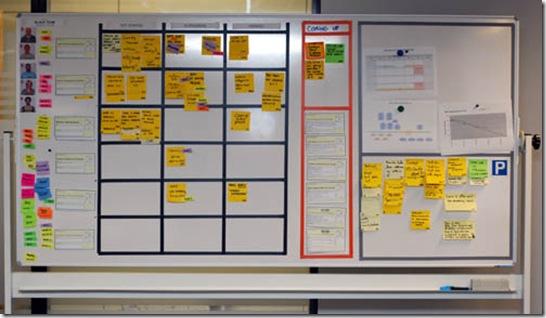Build vs Buy: A Decision Framework for Engineers

The Build vs Buy Dilemma: Why It Matters
If you’ve ever led a team—at a scrappy startup or a scaling enterprise—you know this crossroads well: Should we build a custom solution, or should we buy something off the shelf? Let’s be honest, this isn’t just a technical debate. It’s one of those core decisions that can shape your product’s future, your team’s sanity, and where you actually make your mark in the market.
I’ll level with you: I’ve been in this exact spot more than once. And as Mohan Kumar notes, “Startups and growing companies often face the pivotal question, 'Should we build a solution in-house or buy it off the shelf?' This decision significantly impacts resources, scalability and competitive positioning. Some companies thrive or fail based on this decision, making it one of the most critical challenges for leadership.” Forbes on the build vs buy decision for startups
On paper, building your own tool feels like a power move—you get exactly what you want, maybe even flex some engineering muscle along the way. But lurking beneath that initial momentum are hidden costs, technical debt, and the risk of spreading your team too thin. On the flip side, buying a solution can save precious time… but you might be trading away customization or finding yourself stuck with a vendor who doesn’t evolve as fast as you do.
This isn’t just about code—it’s about putting your resources where they’ll make the biggest difference for your business. In my experience, successful organizations realize that every hour spent maintaining non-core systems is an hour lost from real innovation. As your team grows and products mature, making the right build vs buy call isn’t just about efficiency—it can be the difference between sustainable growth and a slow slide into complexity.
A Personal Lesson: When Building Backfires
I’ll never forget facing this decision early in my career. Our team needed a basic permissions system—a way to manage roles and access for our app. Not exactly rocket science. But instead of taking the time to see what was already out there, I dove straight into code. I was sure I could knock out something perfectly tailored to our needs.
Three weeks later, I had working logic and comprehensive tests. It looked like a win on paper. But as soon as the dust settled, regret crept in. Each new edge case became another maintenance headache. I realized I’d ignored solid, existing solutions because I was already “in the zone.” Sound familiar?
This is what’s known as the Iceberg Model in product development—what you see (the coding sprint) hides a much bigger mass below the surface: maintenance, support, and all the opportunity costs that quietly add up. What I learned the hard way: building feels productive in the moment, but every line of code is a commitment. And when you’re maintaining tools that aren’t core to your mission, you’re siphoning energy away from real innovation.
Don’t skip this part—it’s where the shift happens. The quick win of building in-house rarely outweighs the long-term cost if that tool isn’t tied to your company’s core value. Understanding build vs buy trade-offs
My “energizing side project” soon became an albatross—a reminder that chasing easy wins can lead to big headaches later.
Breaking Down the Build vs Buy Decision: A Practical Framework
After learning this lesson firsthand (and honestly, after cleaning up my own mess), I started using a practical framework to bring clarity to build vs buy decisions—without all the hand-wringing.
One tool I rely on is the RICE framework (Reach, Impact, Confidence, Effort). You can adapt it to weigh options side by side: estimate who’ll benefit (reach), how big the impact is, how confident you are in success, and how much effort each path will take. Suddenly, trade-offs become clear.
Here’s my six-step guide for running your own build vs buy evaluation:
-
Core vs Context
Is this feature a competitive differentiator? If it doesn’t set you apart—if it isn’t tied to your unique value—you’re probably better off buying. As one study points out, "If you purchased software, your competitor can easily buy it too. That’s why buying software will rarely give you a competitive edge." Why buying rarely creates competitive advantage But if it’s central to how you win in your market? Building might be worth it.
In tech leadership circles, understanding when something is truly core can be challenging. For example, The Technical Decision Playbook: In-House vs. Outsourcing offers valuable insight into how organizations assess which competencies should remain internal versus those that are better handled externally.
-
Time-to-Impact
How quickly do you need results? Building always takes longer than we hope—requirements creep, integration surprises pop up. Sometimes getting 80% of what you need today beats chasing perfection for months or years. The right framework helps teams assess core competencies and time-to-market pressures so they make smart investments from day one Assessing time-to-impact with decision frameworks.
If your team is struggling with productivity trade-offs between speed and reliability, The Technical Decision Playbook: Ship Fast or Refine? explores how leaders balance velocity with quality when timelines are tight.
-
Maintenance Cost
Every custom tool is a future commitment. Who owns it next quarter? Next year? If buying lets you sidestep fires and avoid technical debt down the line, it’s usually worth strong consideration.
Many organizations overlook maintenance when evaluating options, only to be bogged down by legacy code later. If you've ever wondered why projects fail even when they start strong, Why Projects Fail (Even When You Build the Right Thing) dives into how alignment and foresight play pivotal roles in long-term project success.
-
Customization Needs
Off-the-shelf works best when it covers at least 90% of your requirements right out of the box. If you’ll end up rewriting half of it—or fighting with endless workarounds—building may be your only real option.
-
Vendor Lock-In Risk
How hard would it be to switch later? Look for open standards or robust APIs when buying; you want room to maneuver if things change down the road.
-
Team Energy
This one often gets overlooked: morale matters. Engineers love building new things but burn out quickly when stuck maintaining low-value internal tools. Protect your team’s creative spark by reserving their bandwidth for what truly moves the needle.
The top-performing organizations don’t wing this—they use comprehensive evaluation frameworks and avoid knee-jerk fixes. Research backs this up: "Successful CEOs make decisions based on complete evaluation frameworks instead of quick fixes... Many use a mix of approaches for other functions. This balanced strategy helps organizations control critical operations and benefit from ready-made solutions where they make sense." What top CEOs choose in build vs buy scenarios

Applying the Framework Beyond Engineering
Here’s something folks often miss: Build vs buy isn’t just an engineering problem. Product managers face it all the time—should we create a custom analytics dashboard or go with an established SaaS tool? Marketing teams debate whether to build their own campaign automation or leverage platforms with proven integrations.
I’ve seen many marketing departments move away from custom email platforms to SaaS providers like Mailchimp or HubSpot—and almost always, they launch campaigns faster and spend less time untangling tech issues.
Operations face these choices too—do we implement generic workflow tools or craft something totally bespoke? The stakes are high; get this wrong and you’re burning energy on inefficiencies instead of driving results.
If you're looking for broader strategies that help teams innovate under uncertain conditions, Embracing Uncertainty: The Key to Team Innovation explores how teams can thrive by making bold decisions even when outcomes aren’t guaranteed.
From Regret to Results: What Happened Next
Back to my story: After months tangled in maintenance headaches with our custom permissions system, our team finally switched to an established tool. Integration took one week—a fraction of what I’d already sunk into building—and we were instantly freed from constant support issues.
The change was huge. We reclaimed weeks of developer time every quarter, reduced risk by standing on the shoulders of a well-supported community tool, and refocused on building features that actually set us apart in the market. Best of all? Morale shot up—our engineers were relieved to be back to high-leverage work they enjoyed.
Research from McKinsey backs this up: Organizations that standardize non-core processes with external solutions can redeploy up to 30% more engineering capacity toward high-impact initiatives—and that’s where true innovation happens.
Our experience isn’t unique; many fast-growing teams learn that true innovation means putting energy where it counts—even if that means letting someone else handle what doesn’t differentiate you.
If you're curious about how engineers maximize their impact by focusing on high-leverage work rather than busyness, From Busy to Impactful: The Shift Leaders Make shares insights on transforming your efforts into measurable results.

Make Better Decisions by Asking Better Questions
At its heart, every build vs buy decision is about trade-offs: control versus speed, customization versus scalability, pride of creation versus freedom from future headaches. The trick isn’t avoiding risk—it’s managing it with open eyes.
What I’ve seen work well is running a ‘Pre-Mortem’ before committing—imagine your build or buy choice has failed spectacularly after a year. What went wrong? Working backward can reveal hidden risks and strengthen your process before you ever start coding (or signing contracts).
- Is this core or context?
- How quickly do we need impact?
- What are the hidden maintenance costs?
- Will off-the-shelf work without major rewrites?
- Can we escape vendor lock-in later?
- How will this affect team morale?
For more actionable frameworks on technical decision-making at any scale, The Decision-Maker’s Framework: Smarter Tech Choices provides additional tools for evaluating software options and aligning them with your team's needs.
Make better decisions by asking better questions—and always put your team’s energy toward what truly sets you apart. Build what differentiates; buy what simply works. That’s how you scale smarter—and sleep better at night.